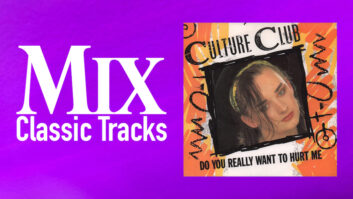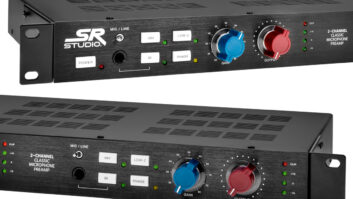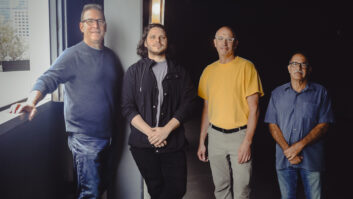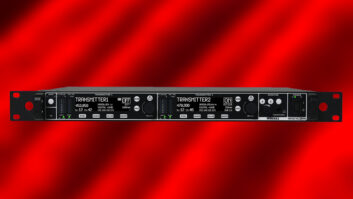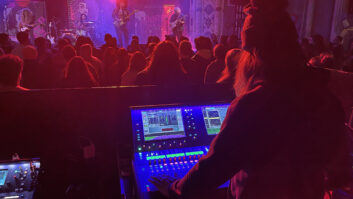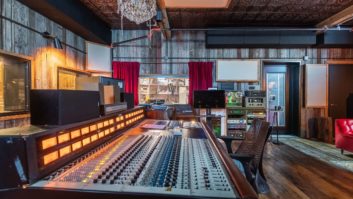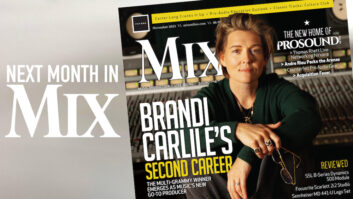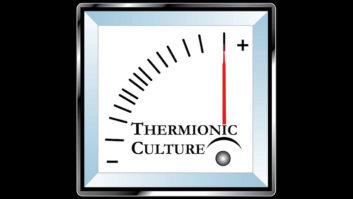Brooklyn, NY—The revitalization of Brooklyn hasn’t been confined to only the realms where hipsters tread; the famed Coney Island now has its own mid-sized venue in form of the new Ford Amphitheater at Coney Island Boardwalk, which opened this past July. Offering 5,000 seats under an open-air tent, the facility had a big opening season that included Eighties U.K. hitmakers Culture Club on the line-up.
The show served up the hits you’d expect like “Miss Me Blind” and “Karma Chameleon,” all presented with a punch thanks to the 13 musicians on stage and the mix laid down by Jimmy Sarikas at front of house on a Soundcraft Vi7000 desk.
The desk was supplied, as was all the control and monitor gear on the tour, by Sound Image (Escondido, CA), the band’s longtime U.S. audio provider. That gear got a good workout during the lengthy North American run, itself part of a world tour that found the production traveling to Australia, Japan and elsewhere, usually multiple times. Wherever the show roamed, however, the aim was the same for Sarikas’ mix.
“We’re obviously trying to capture a bit of the Eighties, which isn’t always easy because the equipment is different now,” he said, “but as long as you can hear everything that you see happening on stage, that’s what it’s all about. You need clarity without taking people’s heads off. You can be loud but you don’t want to be painful.”
Keeping that in mind, Sarikas was always engaged with his console; it wasn’t a show meant for coasting with a generalized overall mix. “It’s really hands-on,” he said, “because every song is very different, especially their hits. You’ve got disco stuff, where it’s like Shalamar, kind of soul-ly. Then you’ve got the reggae stuff, then high-energy rock songs, so it’s changing continuously.”
Helping him keep track of all that was the Soundcraft Vi7000 console at front-of-house—a desk he chose in part because he liked the sound so much that he bought one a few years ago back home in the U.K. While the desk is more commonplace overseas, he found himself surprised by the fact that others were surprised that he took one around the U.S. “Everyone’s commented on it: ‘Oh wow, it’s the Soundcraft Vi7000—haven’t even seen one yet.’ Doing the Hollywood Bowl with this was amazing; even the engineers at the Bowl who have an SD7 said that the mix was absolutely warm, clean and everything was audible, and I think that’s the thing about the Soundcraft desk for me—you get the separation, you hear everything that you’re mixing on stage and it’s very stable.”
The brand-new Ford Amphitheater at Coney Island Boardwalk opened this past summer, able to seat 5,000 in an open-air tent next to the beach.

Part of his appreciation for the desk stemmed from the Soundcraft Realtime Rack, which allows Vi series consoles to use Universal Audio UAD plug-ins, though he readily admitted that he tends not to use plugins to get specific sounds. Instead, he opted to use the desk’s onboard EQ and compression, turning to the Realtime Rack for things like the A800 plug-in which he occasionally threw across the left and right (“it really warms up; it’s like a virtual tape machine, which is great”) and a variety of Lexicon reverbs used in addition to the ones onboard the console.
“For vocals and brass, you’ve got great frequency compressors on the Universal Audio plug-ins,” he said. “They’re very helpful to mix in to get rid of any nasties that are happening on the high end, because obviously sometimes stuff that is really piping out loud gets aggressive, so you want to compress those frequencies that are aggressive. Then on lower volume stuff, those frequencies are needed, so the frequency compressor does all that for you, which is amazing. So the Realtime Rack is a plus for the Soundcraft team.”
A variety of microphones were used to capture the 13 musicians onstage—the original four members (guitar, bass, drums, vocals), plus a three-piece brass section, percussion, keyboards, guitar and three background vocalists. Audio-Technica overheads and pencil condensers were used around the drums, in addition to a slew of Sennheiser e904s used on toms and both sides of the snare, and a Shure Beta52 and Sennheiser e901 on the kick. Percussion was heard via a selection of e904s, SM57s on rototoms and Audio-Technicas on overhead left and right, chimes and toys. Shure Beta57s captured the brass, and wireless UHF-R transmitters with SM58s were used for all vocals. Guitars went through e906s and everything else was via Radial DIs. “I use Radial by default all the time,” he said. “They’re faultless, they’re clean, the bandwidth is great, never had a problem with them and would never use anything else. Love ’em.”
Sound Image provided all control and monitor gear for the Culture Club tour, including the DiGiCo SD10 used by monitor engineer Niko Bell, seen here at the new Ford Amphitheater at Coney Island Boardwalk in New York, NY.

A JBL Professional VTX rig was used for the stop at Coney Island, but the band played through a variety of PAs across the tour. “JBL, which I wasn’t a big fan of, I enjoy now, so that was interesting” said Sarikas. “L-Acoustics or d&b and JBL are basically my thing these days. In the UK, I’ve used K2 many times and we had it once out here, and there was the K1 system at the Hollywood Bowl—that was a huge line array and it sounded amazing.”
When it came to sidefills, however, the band heard itself via a selection of L-Acoustics Kara boxes—three a side above SB28 subs, all fed a mix from monitor engineer Niko Bell’s DiGiCo SD10 at stageside. “I’m pretty particular with my workflow and the way I have the desk set out; I like it to be a certain way,” said Bell. “The SD10 allows me to do that exactly as I want so I can keep concentrating on stage, which is important when there’s so many people.”
The band heard itself via a variety of in-ear monitors, with buds from Ultimate Ears, JH Audio and UK manufacturer Cosmic Ears—the latter being the brand used by both Bell and singer Boy George. The tour’s wedges—proprietary Sound Image 2x12s powered by Crown amps—were used by all of the original band except drummer Jon Moss, with George opting to use both wedges and in-ears as needed.
Ultimately, the U.S. summer tour leg was such a hit that the band returned in November for another run, enroute to a string of December show in Australia and New Zealand, before closing things out midmonth at the SSE Arena in London, all the while with Sarikas, Bell and the considerable contingent of musicians all in tow.
Sound Image
Sound-image.com
Soundcraft
Harman.com
